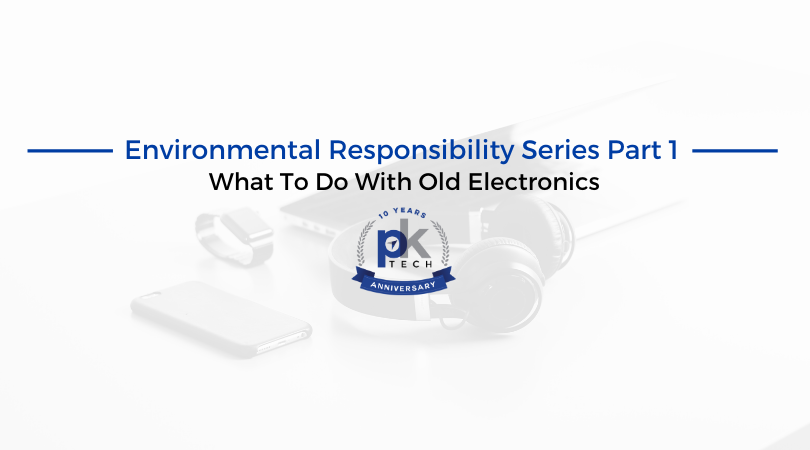New Recycle-by-Mail Program Offered by Best Buy
Do you have a collection of old devices and chargers around your house? Unsure what to do with them? You’re not alone.

E-waste is a growing problem in the United States and beyond. We’re talking discarded computers, televisions, printers, cell phones, smoke alarms, microwaves, and other miscellaneous electronic equipment. Up until last September, China accepted 70% of the world’s electronic waste- when they stopped doing so, many countries like the United States were faced with the reality of the growing e-waste problem and what to do about it.
We’re glad you asked. As members of the technology industry, we see firsthand the quantity of electronic waste or “e-waste” and realize that it’s only a growing issue. In 2016 alone, 49 million tons of e-waste were discarded throughout the world. This is estimated to grow over 60 million tons by the year 2021. Think on that for a second. Like we said, it’s a BIG problem.
As technology becomes more integrated into our lives, the potential for waste increases as well. At the same time, the life cycle of usage for products is decreasing; meaning, people are purchasing more technological devices, but using them for less time. Part of this is also due to the fact that technology companies are designing devices with a limited shelf life to entice buyers to continue purchasing the next newest model. Devices are also becoming cheaper, which means the growing middle class is becoming more dependent on technology as well. The overall result: a lot more e-waste.
Repair
As a society, we’ve moved away from repairing just about anything- let alone electronic equipment. We live in an age where sometimes it’s cheaper to “buy a new one” than it is to repair the original device. By making an effort to repair broken equipment that could still be usable, we aid in decreasing growing global e-waste. Only purchase new devices when you truly need them for higher functionality. Choose the option to repair and reuse whenever possible.
Producer Responsibility
The waste created in production- no matter what industry we’re talking about- is extremely high. In the electronics and technology space, placing higher standards of responsibility on the producer of these electronics is proven to aid in reducing e-waste. But, this starts with the consumer. Demanding better repair and recycling policies for companies you purchase from. Being an informed consumer. All of this helps to reduce the growing e-waste footprint.
Recycling
Recycle, recycle, recycle! You’ve heard this about plastics, glass and cardboard, but now we’re talking electronics. Yes, you can recycle your electronics! Some stores even, like Staples, accept recycled ink cartridges, stores like Verizon offer recycling for cell phones and businesses like us (PK Tech) will help our clients recycle their e-waste. We take our clients’ old PCs, network equipment, and printers, and work with a local company to properly recycle them. If hard drives are involved, we pull out the drive, document it, crush it securely, and give the leftover pieces to a recycler.
To contact PK Tech, click here.

Do you have a collection of old devices and chargers around your house? Unsure what to do with them? You’re not alone.

Electronic recycling should be on everyone’s radar, but in case you’re behind the curve, this blog is especially for you! We believe strongly in the...

PSA: If you ever find any sort of electronic storage (USB Drive, Flash Card, SD Card, SIM Card, etc) DO NOT ATTEMPT TO SEE WHAT’S ON IT.